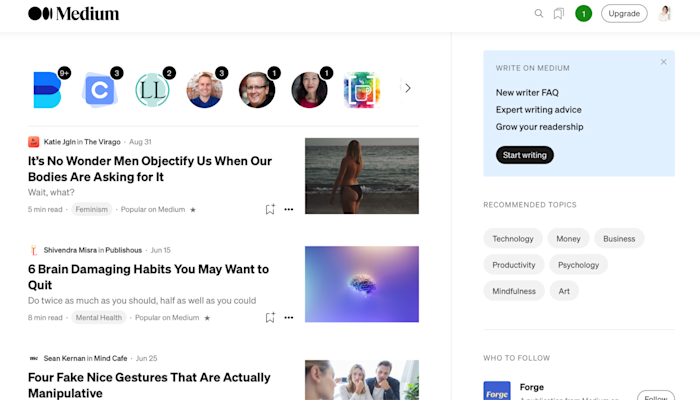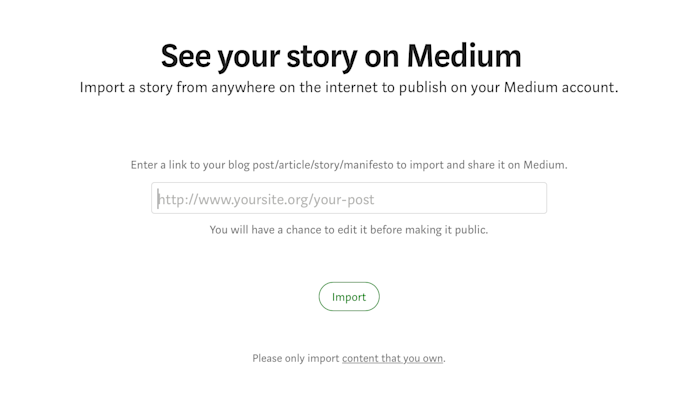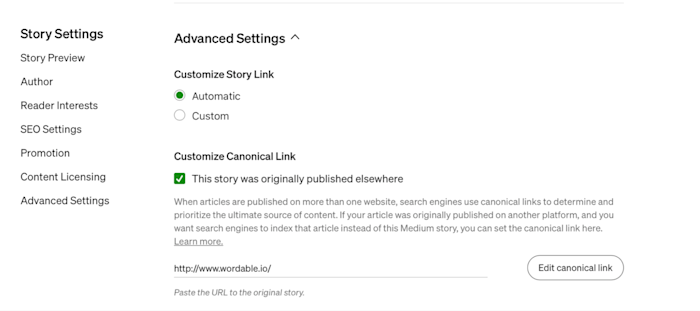Writing even the most mind-blowing blog post won’t cut it when it comes to content marketing. Say it with me: you need a content distribution strategy.
Automate your marketing
Streamline your processes, minimize recurring tasks, and increase ROI.
Beyond writing SEO-driven blog posts, most distribution strategies require some effort to repurpose the content for the new medium, whether that’s turning it into a video, creating a graphic for social, or expanding it into a gated eBook.
This brings us to Medium: it’s primarily a content publication platform, but it can be used strategically for content distribution—without any extra adjustments. Let’s talk about how Medium can be an easy win for your content marketing efforts.
What is Medium?

Medium is a publication and content-sharing platform, kind of like Substack for blogs. Anyone can join the site and publish articles for free, and readers can either search and browse (like they would any other publication) or subscribe to certain authors. Readers also get suggestions on content to read or who to follow based on their interests.
As a content publisher, this means you have a built-in audience.
But while Medium is a great place to republish your content, it shouldn’t be your primary publication platform. That honor still goes to your company blog. After all, the ultimate goal is still to drive traffic to your website, so people can see more of what you have to offer beyond just the one article they stumbled across on Medium.
How to use Medium as a content distribution platform
The key to taking advantage of Medium’s built-in audience—while still keeping the focus on your own site—is thinking of it as a content distribution platform, not a content publication platform.
Syndicate your content on Medium
This is the most important part of the plan: you can syndicate content on Medium that’s already been published on your site. When you do this, it tells Google that the primary publication is your website and that Medium has permission to republish it. That means you won’t get dinged for duplicate content, so your SEO won’t take a hit.
Here’s how to syndicate your posts on Medium:
1. Create your brand profile.
2. Click Stories from the dropdown menu attached to your account icon.

3. In the top-right corner of the page, click Import a Story.
4. Copy a link to the published content, and it will be imported into Medium as syndicated content.

When you import a story this way, Medium uses a canonical link so that search engines index your original article instead of the version on Medium. You don’t lose any SEO love, and you get a link back to your article from the original piece.

Consider syndicating on other Medium blogs
If you want even more reach on a specific piece of content, you might consider allowing third-party publications to syndicate your content on Medium. They’ll typically allow you to keep in all existing backlinks—and ideally some product shout-outs—while crediting the original author and the brand.
You can search on Medium for publications in your industry to see if any are a good fit. If they have a decent reach and a similar target audience, it can put you in front of even more leads. This is a great way to keep all your original, branded content on your site, while still taking advantage of Medium’s reach.
Keep all backlinks going to your website
Whether you’re publishing something on your own blog or writing a guest post for another publication, always keep any backlinks going to your own site, not to any content you published on Medium. Backlinks have great SEO value, and you want that juice to go to your business’s website.
Is there a reason not to syndicate on Medium?
While syndicating on Medium won’t hurt your SEO, there are a few downsides to reposting your content:
-
Even though Google will prioritize the original post on your site, humans might not do the same. If people find and love the post on Medium, they’ll link to it there when they share it.
-
While you can drive links from Medium to your site, Medium doesn’t allow you to create a fully branded experience, so people won’t get to know your brand like they would while reading your blog.
-
There aren’t any opportunities to add email subscription forms or other opt-in boxes for lead capture.
Of course, if you’re reaching people that you wouldn’t have connected with otherwise, you still have a shot at sending them to your site. So while you’ll benefit most from having your content exist on your own website, Medium’s built-in audience is an incredible distribution opportunity.
[adsanity_group align=’alignnone’ num_ads=1 num_columns=1 group_ids=’15192′]
Need Any Technology Assistance? Call Pursho @ 0731-6725516







